When rock band Queen toured Japan in 1975, it inspired Freddie Mercury to start collecting Japanese art and antiquities.
The flamboyant frontman sometimes wore boldly patterned kimono on stage in the mid-1970s, “challenging the norms of gender and sexuality”.
Now, visitors to a major new exhibition at V&A Dundee, can discover how that gender fluidity extended to his private life.
A personal kimono that Mercury wore at home features prominently in Kimono: Kyoto to Catwalk, which opens at V&A Dundee on May 4.
The garment has until recently been in a private collection.
Speaking to The Courier ahead of the launch, V&A Dundee exhibition curator Kirsty Hassard said the garment provides audiences with a glimpse into the personal life of the late showman.
However, it’s also an example of how the kimono has transcended through the centuries from traditional Japanese garment to the heart of contemporary popular culture.
“This delicately patterned kimono was owned and worn by the late Queen frontman at home,” she said.
“In contrast to his flamboyant on-stage style, for which he sometimes wore boldly patterned kimono, this garment is quite subdued.
“However, it is overtly feminine, indicating that even privately Freddie Mercury used kimono to challenge gender and sexuality.
“He probably acquired the garment in Japan during one of Queen’s many tours.”
What else features in the V&A Dundee kimono exhibition?
Kimono: Kyoto to Catwalk explores the fascinating story of the style, appeal and influence of the kimono.
The traditional Japanese garment, renowned for its elegance and cultural significance, embodies a blend of artistry, history and symbolism.
The exhibition features rare 17th and 18th Century kimono displayed alongside modern designs from Issey Miyake, Yohji Yamamoto and Alexander McQueen.
The kimono’s recent reinvention on the streets of Japan is also explored through work by a new wave of contemporary designers and stylists.
The beauty and significance of the kimono, meaning simply ‘the thing to wear’, is celebrated with a collection of around 300 garments, accessories, paintings, prints, photographs and film clips from the V&A and collections around the world.
However, the synergy between the iconic Japanese garment and the Japanese origins of the V&A Dundee building have not been lost either.
How kimono has synergy with Kengo Kuma’s V&A Dundee building design
When renowned Japanese architect Kengo Kuma designed the V&A Dundee museum, he revealed in an exclusive interview how he took inspiration from the local landscape and culture of Dundee.
Situated on the banks of the River Tay, Kuma designed the building to reflect the surrounding natural environment, particularly the cliffs along the Scottish coastline.
He paid homage to Dundee’s seafaring past with the building’s angular form reminiscent of the prow of a ship.
His use of layered concrete panels on the exterior of the building also references Dundee’s history as a centre for textile production, creating a textured effect reminiscent of woven fabric.
How apt then that the unique building should be the first Japanese-designed venue to host a major Japanese clothing-themed touring exhibition, which is making the V&A Dundee its final international stop.
Kirsty added: “It’s certainly the first time that this truly Japanese subject has been housed in a Japanese-inspired building.
“I think that’s one of the reasons why the team at V&A Dundee were so excited to do this exhibition because it feels like the perfect teaming up of subject matter combined with the architecture.”
Bjork and other V&A Dundee kimono exhibits: where have they come from?
The bulk of the exhibition comes from the collection at V&A South Kensington.
It’s regarded as the best collection of Asian fashion in the UK, if not Europe.
Contributions come from the Khalili collections, which is a private collection of Japanese art and textiles.
However, private lenders have also donated items, including the National Trust for Scotland.
Cultural references include Obi-Wan Kenobi’s tunic in Star Wars – which has strong Courier Country connections – being modelled on the kimono.
Another musically-themed highlight is the Alexander McQueen dress worn by Icelandic pop pixie Bjork on her Homogenic album cover in 1997.
Collaborating with McQueen, photographer Nick Knight and stylist Katy England, the kimono-style dress by McQueen and Masai neck rings by Shaun Leane refashioned Bjork into a futuristic warrior goddess.
What’s the history of the kimono?
“The kimono has existed within Japan for centuries,” said Kirsty.
“It really came to prominence in the Edo period – the 17th Century.
“As the ultimate symbol of Japan, there’s this idea that the kimono has remained consistent over the centuries,
“But the main idea that the exhibition tries to counteract is that the kimono is this static and unchanging and very traditional garment.
“The kimono has always been a dynamic item of fashionable dress that has been restyled consistently throughout its history, influencing modern fashion and popular culture, from evening wear and festival fashion, to rock stars and Star Wars.
“It’s been constantly re-invented by designers in Japan and outwith Japan as well. That’s one of the major themes in the show.”
V&A Dundee exhibition space is well suited to kimono showcase
Kirsty has worked at both the London and the Dundee V&As.
With a background in history then textiles and fashion, she started at the V&A in London in 2015 before working with V&A Dundee pre-2018 opening.
She was one of the curators on the ‘Tartan’ exhibition last year.
What the V&A Dundee building offers, Kirsty says, is an “amazing” opportunity to re-purpose that space in a “completely transformative” way.
But the exhibition also looks at the origins of the kimono right up to the present day.
“What the exhibition really does is it tells the history of the kimono,” she said.
“We’ve got some amazing pieces from 1680 – the earliest piece in the exhibition.
“That’s the oldest kimono surviving in a European collection.
“It was acquired for this exhibition by the V&A which is incredible.
“But we’ve got contemporary work from Alexander McQueen and John Galliano in the show as well as known designers such as Miyake.
“It may be that visitors to the exhibition won’t have heard of them, but they are really popular and significant within Japan.
“They are constantly looking at what the kimono can be and how it’s constantly relevant within the 21st Century.”
Donations by Sir Mick Jagger
Kirsty said the structure of the exhibition is chronological.
It explores how the kimono is having a “massive effect” on western fashion.
“A lot of the clothes that we wear today are indirectly inspired by kimono and the way that it changed the silhouettes that designers were crafting – particularly in the early 20th Century,” said Kirsty.
“So you are looking at designers like Fortuny and really interesting avant garde designers that were taking their inspiration from kimono, which is amazing.
“And then in the final section we’ve got a couple of objects that have been added for the V&A Dundee iteration of the show, so it’s a new kind of finale to the exhibition.
“We’ve got two objects that belonged to L’Wren Scott, the model and fashion designer.
“I think in her 2012 collection she was inspired by kimono.
“We’ve got that piece that she designed in 2012 and then we’ve got the kimono that she was inspired by for that. They were both donated to the V&A by her partner Mick Jagger.”
Connections between Scotland and Japan
The wider cultural connections between Scotland and Japan are not the focus of the exhibition. But they are mentioned.
For example, a robe, loaned by the National Trust for Scotland and normally kept at Newhailes House outside Edinburgh, was made in the 17th Century at a time when Japan was a “closed country”.
“At the time, it meant that nobody was really allowed to trade with Japan,” said Kirsty.
“It was only the Dutch East India Company who were able to bring objects or anything really.
“It’s a robe rather than a kimono – it was manufactured in Japan and made its way to just outside Edinburgh to the Dalrymple family where it was worn by Sir James Dalrymple.
“This was the first idea of connections between Scotland and Japan.
“It might not exist so strongly in the exhibition, but it’s definitely a really important story.”
Another connection to V&A Dundee
“Also, if you look at the context around a lot of these objects and particularly from the point that Japan opened up to the western world in the mid-19th Century onwards, that’s certainly when you start to see a lot more of these Japanese-Scottish connections flourishing.
“And obviously the fact that in V&A Dundee we have the Macintosh tearoom.
“Although Macintosh never actually visited Japan, he was inspired by Japanese woodblock prints and he was inspired by Japanese architecture.
“So although that isn’t referred to strictly speaking in the exhibition, I think as a visitor when you are coming to the museum, you are understanding the context of the designers who are represented within the museum itself.”
Kimono: Kyoto to Catwalk runs from Saturday May 4 2024 until January 5 2025 at V&A Dundee.
Tickets £7 to £15. £2 discount when booking online. Members and 18s and under go free.
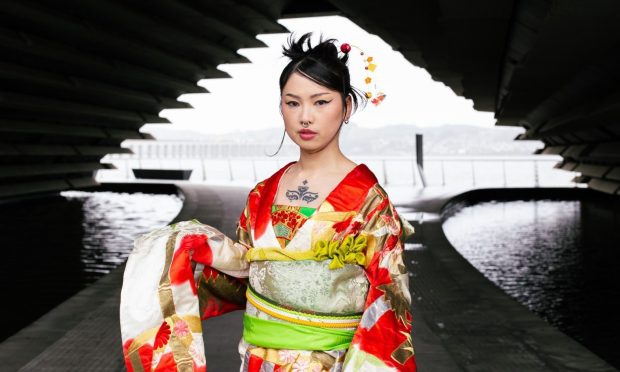
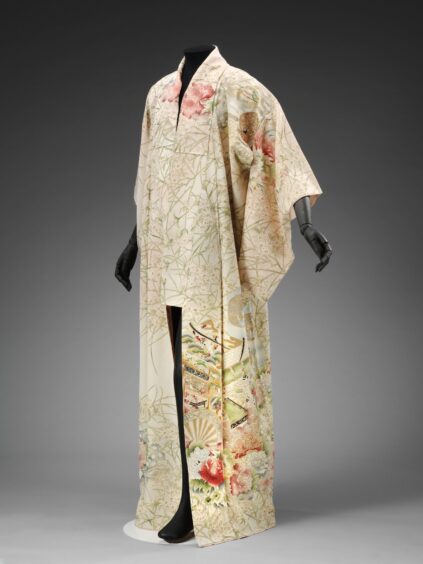
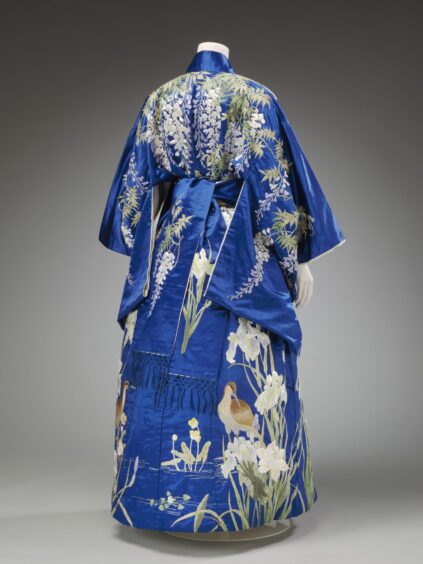
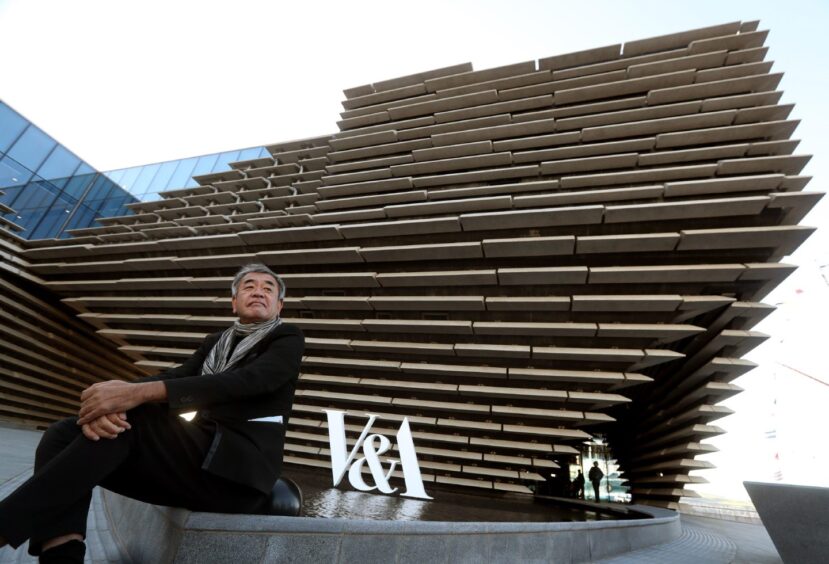



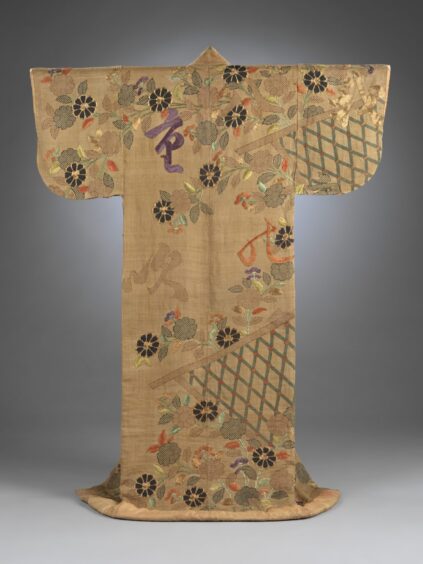
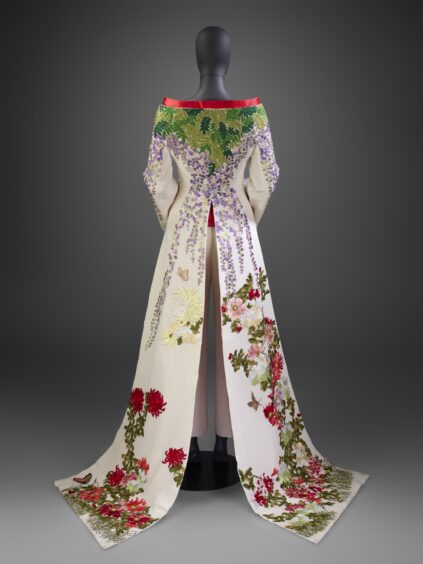
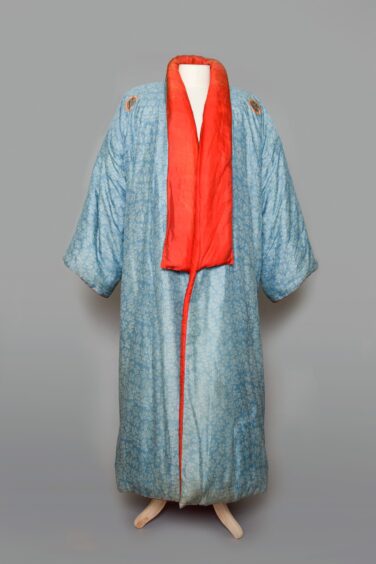
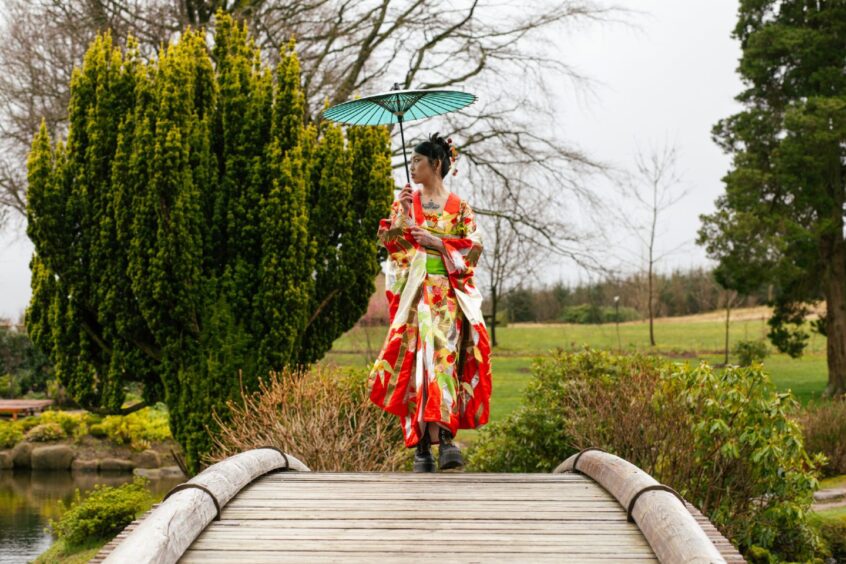









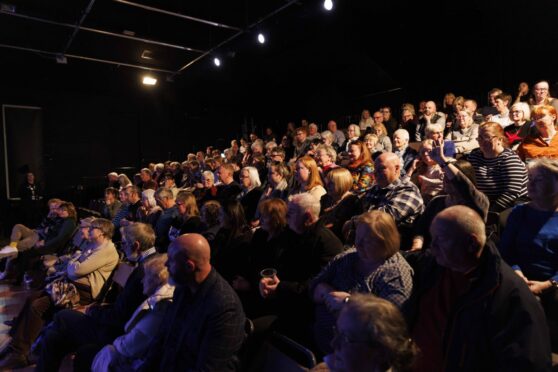
Conversation